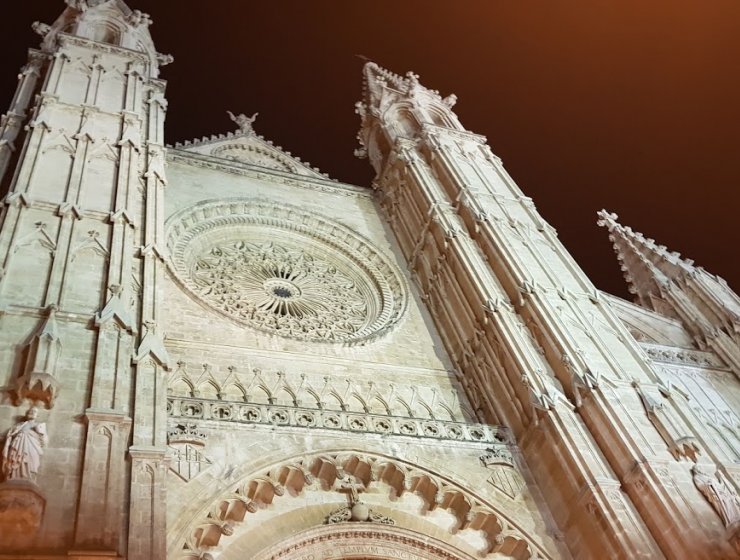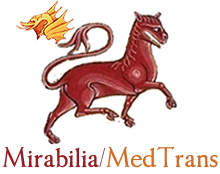
-Index-
Articles
Culture and school in the Middle Ages. Light and shade of educational problems
Giorgio CRESCENZA
Original title: Cultura y escuela en la Edad Media. Luces y sombras de problemas educativos
Keywords: Church, Education, Libraries, Medieval Age, Thomas Aquinas, University.
Famines and pestilences that alternated in the medieval age did not always allowed an orderly and regular flow of life. In this context, education and culture have not been a priority for all and of all, however cultural and educational strengths are many, including the birth of Universities and libraries. The article deals with a historical-pedagogical analysis on what happens in the school or in institutions similar to it which transmit culture codified in certain forms, through certain tools, with specific purposes. And this with the awareness that, especially in some periods, Courts and Churches are exactly the main vehicle of education, unlike school. It seems that an extensive renewal movement crosses the same religious circles and, on this point, the pedagogical project by Thomas Aquinas is reminded.
Architecture in the Cantigas de Santa Maria by Alfonso X (13th century): Huelva, the Islam and the triumph of the Virgin Mary
Bárbara DANTAS
Original title: Arquitetura nas Cantigas de Santa Maria de Afonso X (séc. XIII): Huelva, o Islã e o triunfo da Virgem Maria
Keywords: Architecture, Islam, Middle Ages, Virgin Mary, War.
The Cantigas de Santa Maria by king Alfonso X is a work with three artistic expressions: music, literature and painting. There are about 420 songs with reports of miracles and praises to the Virgin written in galician-portuguese and accompanied by illuminations that represent words in images. The focus will be to demonstrate the presence of architectural forms in the text and the illumination of the Cantiga 273, the miracle report of the city of Huelva-Andalusia. The architecture as a record of the defeats and victories occurred in the battles between christians and moors during the centuries of the Reconquest of the Iberian Peninsula, as well as the pacific artistic syncretism of that time.
Bernat Metge, moralist: the degraded woman, exponent of the hatred and human suffering in his time
Júlia BUTINYÀ
Original title: Bernat Metge, moralista: la dona degradada, exponent de l’odi i del mal humà en el seu temps
Keywords: Bernat Metge, Catalan Literature, Humanism, Middle Ages, Moral.
Metge offers a new vision of women and their entity, which shifts the medieval as a result of contempt and, at the same time, is his prototypes of hatred. To this end, he portrays the most disgusting ad degrades version, which comes from the Corbaccio, followed by an exquisite gallery of women, inspired by classics. In fact, it is a moral reform, which pictured with the rejection of the misogyny and of the petrarquesque ethics towards love, which was the deformation of the agustinian and confirmed the traditional morality.
Powerful widows on Gandia’s 15th century, case studies
Marta MORANT
Original title: Viudes poderoses a la Gandia del segle XV, estudi dels casos
Keywords: 15th Century, Gandia, Power, Widows, Women’s history.
Throughout history, the figure of the widow has been perceived through a lens at some distance from reality. This has condemned them to historical passivity and has attributed to them a subordination which bears little relation to the reality of their lived experience. With the study of in a vila conducted in the Kingdom of Valencia at the end of the medieval period, and through the analysis of primary sources, the real situation in which they lived will be shown: the family and social contexts of which they formed part, and the capabilities they used to defend both themselves and their families’ property. We will thus be able to refute the claims that were socially constructed about them, and to consider them as agents of history, and not mere observers of it.
An approach to the textual transmission of Martí de Troppau's Chronicon pontificum et imperatorum in the anonymous Crònica universal de 1427
Jacob MOMPÓ NAVARRO
Original title: Aproximació a la transmissió textual del Chronicon pontificum et imperatorum, de Martí de Troppau, en l’anònim Crònica universal de 1427
Keywords: Chronicles, Historiography, Textual Transmission, Universal History.
The Chronicon Pontificum et Imperatorum by Martí de Troppau is, along with the Història Escolàstica by Pere Comestor and the Speculum historiale by Vicenç de Beauvais, one of the main sources used by the compiler of the Crònica universal de 1427. The Chronicon will be referred to three different times by the author himself and will thus give rise to three different families in the textual transmission of Martí de Troppau's work, which L. Weiland identifies with letters A, B and C. In this work we provide some evidence that allows us to assume that the version of the Chronicon from which the author of the Crònica de 1427 compiled came, ultimately, from a thirteenth-century manuscript that depended on the A family, but with enough particularity to start a new subfamily, the A*.






















































































